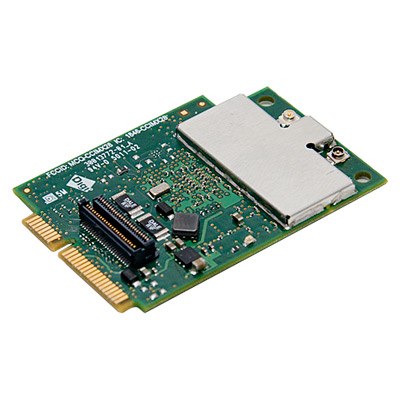Like their larger single board computer (SBC) cousins, computer-on-modules (COMs) continue to be dominated by x86 processors, primarily Intel Core and Atom chips. Although Linux-ready, ARM-based COMs have been available for years, most based on ARM9 processors, many major COM vendors have avoided them. In the last year, however, we’ve seen an explosion of new COMs based on numerous ARM architectures and processors, bringing ARM advantages like lower power consumption, Android compatibility, and usually, lower cost, to a broader embedded COTS audience.
 Here I look at 10 Linux-ready embedded ARM COMs that have been announced or shipped in the last six months (click on the Gallery links at the bottom of the page for a slideshow). Most also ship with Android and Windows Embedded support. The COMs, sometimes called system-on-modules (SOMs), are based on system-on-chips (SoCs) ranging from 400MHz ARM9 chips to Cortex–A9 SoCs like the Nvidia Tegra 3, and even a Cortex-A15 design. Freescale’s i.MX6 is particularly popular, as it gives developers a choice of one, two, or four cores.
Here I look at 10 Linux-ready embedded ARM COMs that have been announced or shipped in the last six months (click on the Gallery links at the bottom of the page for a slideshow). Most also ship with Android and Windows Embedded support. The COMs, sometimes called system-on-modules (SOMs), are based on system-on-chips (SoCs) ranging from 400MHz ARM9 chips to Cortex–A9 SoCs like the Nvidia Tegra 3, and even a Cortex-A15 design. Freescale’s i.MX6 is particularly popular, as it gives developers a choice of one, two, or four cores.
Although the x86 COM market is thriving, and there are also modules based on Freescale’s PowerPC-based QorIQ SoCs, ARM seems to be the module choice de la moda. The tipping point came last fall when embedded manufacturing giant Kontron received widespread industry support for a new ARM COM standard called ULP-COM, which has since been renamed by the SGET standardization group with the somewhat Bond-sian moniker SMARC. Meanwhile, ARM is also showing up in QSeven and other formats.
The ARM module market has greatly benefited from such standardization efforts, says LinuxGizmos.comeditor and publisher Rick Lehrbaum, who helped establish the PC/104 module form-factor in the late ’90s. “ARM-based COMs and SBCs have tended to lack consistent form-factor or expansion bus standards, resulting in a lack of module-level alternate-sourcing options,” says Lehrbaum.
According to Lehrbaum, the current boom in ARM boards is also fueled by the continuing growth of ARM-friendly Linux, and more recently Android, in the general embedded market. He cites other factors including the increasing speed of ARM SoCs, the increasing demand for power efficiency, led by mobile devices, and the billions of ARM SoCs sold into the smartphone and tablet markets, which have significantly lowered Bill-of-Material (BOM) costs.
On the other hand, unlike x86, ARM parts aren’t typically supported for extended operating temperatures or long component lifecycles required by many embedded applications, he notes. Meanwhile, “Intel is moving rapidly toward mobile-oriented SoCs,” says Lehrbaum.
Modules vs. SBCs
Unlike SBCs, COMs typically lack real-world ports, and extend their I/O through a connector that supports compatible carrier boards based on standards like COM Express, QSeven, and SMARC. Others use proprietary connectors, often based on a 144-pin SODIMM layout, designed to work only with the company’s own carrier boards. All the modules listed here are available with optional or required carrier boards.
Modules are easier to work with, but less flexible and customizable, than building out directly from a SoC. On the other hand, developing embedded devices using COMs is more difficult and time-consuming than using an SBC like a BeagleBone or Raspberry Pi, but offers more flexibility for hardware customization.
For more information on Linux-ready modules and SBCs of all stripes, including detailed reports on most of the COMs listed here, LinuxGizmos is a great place to start.
Click on the Gallery link below to see 10 hot new ARM modules, in ascending order of processor speed.

